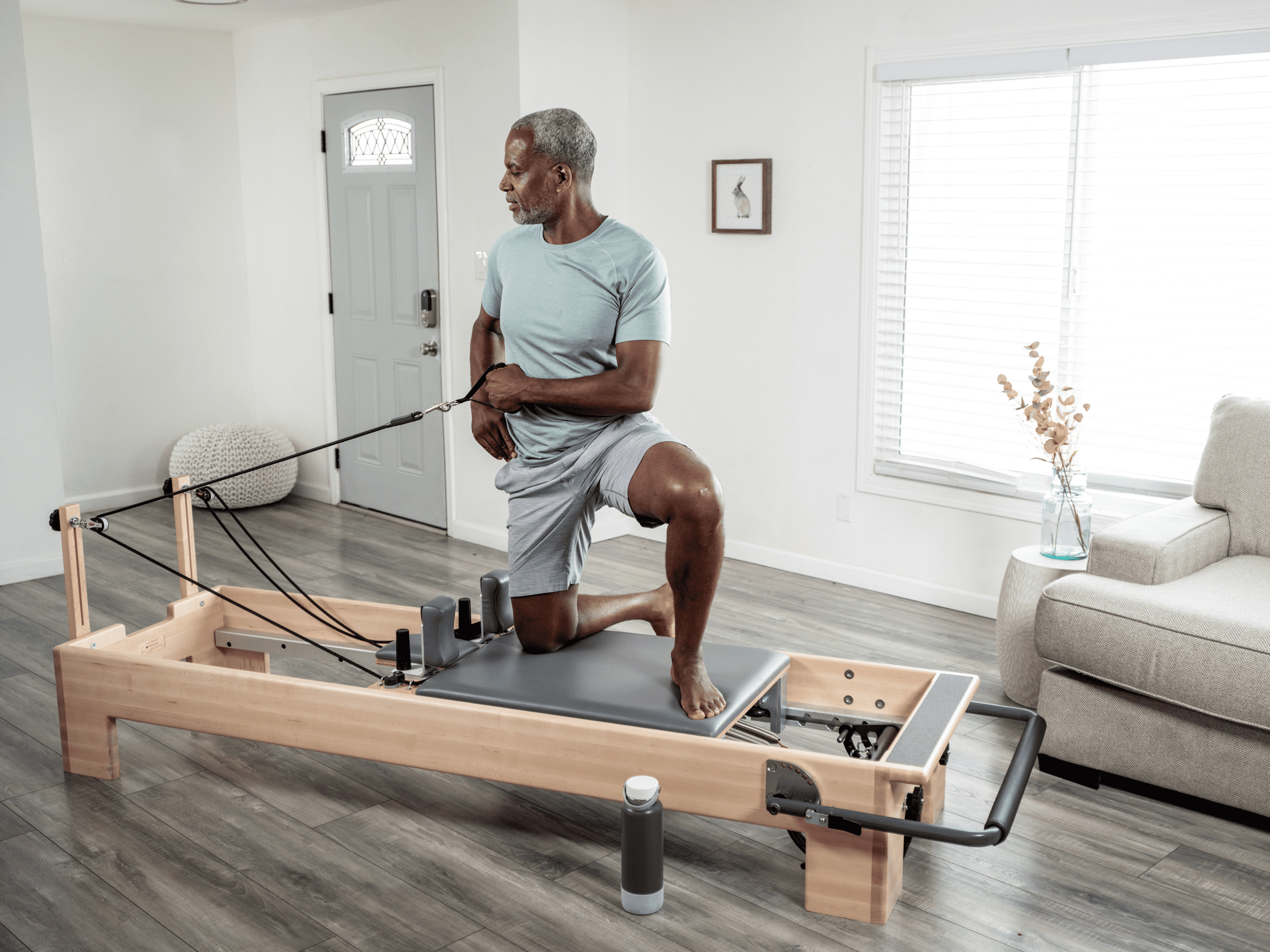Pilates Programming for the Older Adult
Pilates Programming for the Older Adult
by Elizabeth Larkam
The most rapid population growth over the next decade will be those over 65 years of age. By the year 2030 more than 70 million Americans will be over 65. This is due, in large part, to modern medicine and health promotion activities. Healthy aging is keyed by three characteristics: low risk of disease and disease-related disability; high mental and physical function; and active engagement with life.
The decline of physical fitness begins at middle age and progresses steadily. Muscles weaken and shrink (sarcopenia), and the sense of balance becomes less acute. The overwhelmingly positive effect that fitness has on both these issues makes it perhaps the single most important thing that an older person can do to remain healthy.
Physical activity is at the crux of successful aging. Many in this population have realized this and are joining health clubs to rejuvenate themselves. The MacArthur studies show that older people – even if they’ve never exercised before – are capable of becoming more physically fit. The frailty of old age is largely reversible. Most older people have the capacity to remarkably increase their muscle strength, balance, walking ability and overall aerobic power.
Pilates mat and studio exercise programs, created for your older members, can address body awareness, muscle strength, muscle endurance, range of motion, balance, coordination, and motor planning. The original Pilates mat and apparatus exercises were designed to flatten the lumbar lordosis, the thoracic kyphosis and the cervical lordosis. The majority of the mat exercises taught by Joseph Pilates involve spine flexion and/or unsupported cervical flexion.
Of the 20 most common original Pilates mat exercises, only six are appropriate for the older adult in that they are performed without flexion, maintaining a neutral spine or spine extension. These exercises are Leg Circles, Side Kick, Side Kick (Up/Down), Swan, Swimming and the quadruped preparation for Leg-Pull Front.
The Pilates Reformer, trapeze table (Cadillac) and chair provide versatile environments that support modifications of the original exercises, making most of them appropriate for the older adult population. These modifications are performed in accord with the principles of Pilates exercise: Concentration, Control, Centering, Flowing Movement, Precision and Breathing.

Guidelines for Designing Pilates Programs for the Older Adult
Each Pilates instructor must work within the appropriate scope of practice. Refer to a licensed medical practitioner if you do not have the skills to provide the services required by the client.
Here are several important guidelines to follow:
1. Medical Evaluation
Each member should have a thorough medical evaluation and receive clearance from their healthcare practitioner before embarking on an exercise program. Everyone known to have heart disease or to have multiple major risk factors such as diabetes, smoking, or hypertension, and all individuals over age 65 should have a thorough medical evaluation prior to initiation of regular aerobic and strength training exercise programs. Risks of exercise include minor muscular/skeletal problems and major heart-related health problems.
2. Maintain a file on each client that includes:
- Completed health questionnaire
- Emergency contact information
- Supervising health care specialist contact information
- List of medications
- Short and long term Pilates functional exercise goal
- Pilates studio exercise plan
- Pilates studio daily session notes
3. Tailor your exercise plan to meet the client goals
De-conditioned Members
De-conditioned members should focus on neutral pelvis and spine alignment together with Pilates breathing. Include supine, quadruped, seated and standing orientations in order to access functional benefits for daily activities.
Members With Osteoporosis
Clients with osteopenia or osteoporosis must focus on neutral spine and spine extension orientations. Avoid flexion, rotation and side bending due to risk of compression fractures to the spine.
Post-rehabilitation Members
Clients seeking post-rehabilitation Pilates sessions following release from physical therapy should follow an exercise program congruent with guidelines from their supervising medical practitioner. Pilates instructors should request guidance regarding the indicated and contraindicated positions and range of motion.
Joint Replacement: Hip And/or Knee
Clients with hip joint replacement must follow a specific exercise protocol congruent with the type of surgery. Usually clients with hip replacement must avoid combining hip flexion, adduction and internal rotation. Focus the Pilates program on lumbar-pelvic stability and strengthening the hip abductors for improvement of gait and standing balance.
Clients with knee replacement must also follow a specific exercise protocol recommended by their supervising medical practitioners. Generally knee flexion of 110 degrees is considered safe and appropriate. Pilates instructors can combine lumbar-pelvic stability with accurate lower extremity mechanics in order to facilitate symmetrical gait and improved standing balance.
A Pilates instructor for 20 years, Elizabeth Larkam is internationally recognized as an innovator of Mind Body movement techniques for fitness, clinical, entertainment, arts and academic settings. Educated in the original Pilates techniques by Pilates elders, Eve Gentry, Carola Trier, Romana Kryzanowska, Bruce King and Ron Fletcher, Elizabeth was a Dance medicine Pilates specialist at Saint Francis Memorial Hospital in San Francisco. Since 2000 she has been Director of Pilates & Beyond at Western Athletic Clubs. Elizabeth is a Balanced Body Master Instructor and a presenter at IHRSA, IDEA, Pilates Method Alliance International Conference, Body Mind Spirit, and Pilates On Tour.
As see in the Fall 2006 Balanced Body Pilates COREterly